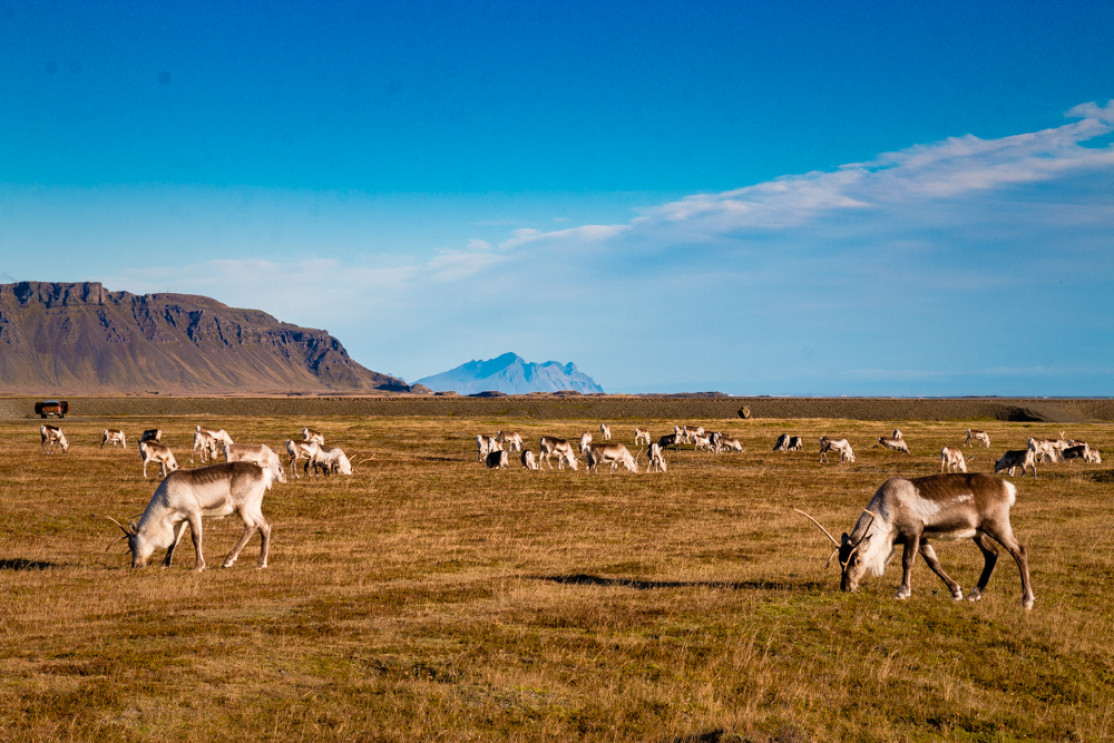Iceland's Reindeer
Reindeer are not native to Iceland but introduced by humans from Norway and Lapland at the end of the 18th century.
This was a dark time for Iceland, the island ravaged by famine and natural disasters. The locals tried becoming reindeer herders like the Sami in Lapland, but the adaptation proved too difficult, and the reindeer ran wild.
By 1817 the reindeer population had exploded, which forced Icelanders to react. Introduced by man, the reindeer has no natural predators and unbalanced the ecosystem, stripping pastures intended for sheep. Reindeer were widely hunted, almost to extinction, before hunting was regulated in the mid-20th century. Today, Iceland has around 3,000 reindeer.
When can you see reindeer in Iceland?

You can see reindeer in winter and summer in Iceland, mostly located at the bottom of the eastern valleys during the summer. From September and for the whole winter, you'll find them wandering near farms in the hope of finding an easy meal. They feed on mosses, lichens, and other hardy plants that survive these hostile grasslands.
Where can you see reindeer in Iceland?

Reindeer are found exclusively in the East of Iceland. In summer, the bulk of the herds are concentrated north of Vatnajökull between Snaefell and the Kárahnjúkar region.
Between Dettifoss and Höfn on route number one, you'll see plenty of signs indicating reindeer nearby, and it is not unusual to see them grazing along the road in this region as well.
The regions around Dettifoss, Egilsstadir and Höfn are where you're most likely to observe them.
Just keep in mind, reindeer are shy animals which is why they move in herds, so be discreet if you want to approach them or take a photo. In winter, reindeer tend to move closer to coastal areas, along the eastern fjords at low altitudes.
In any case, an encounter with one of these magnificent animals is something you won't soon forget.